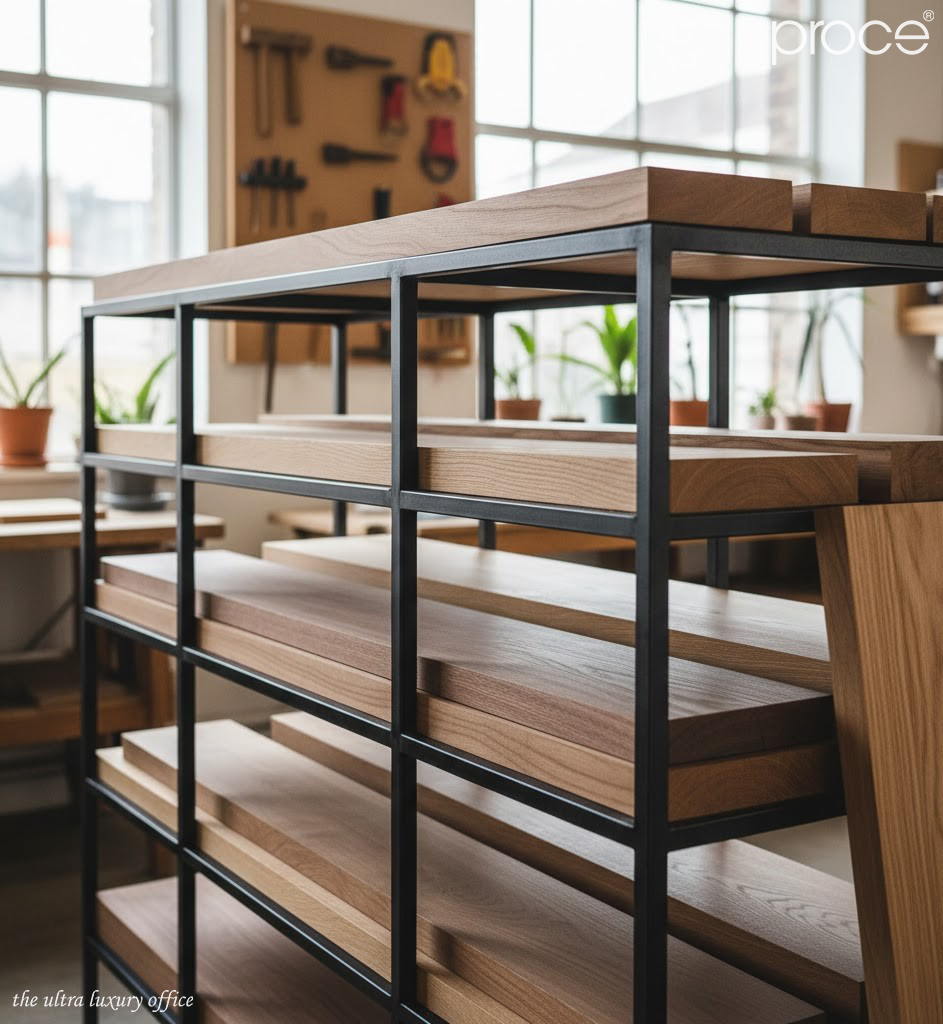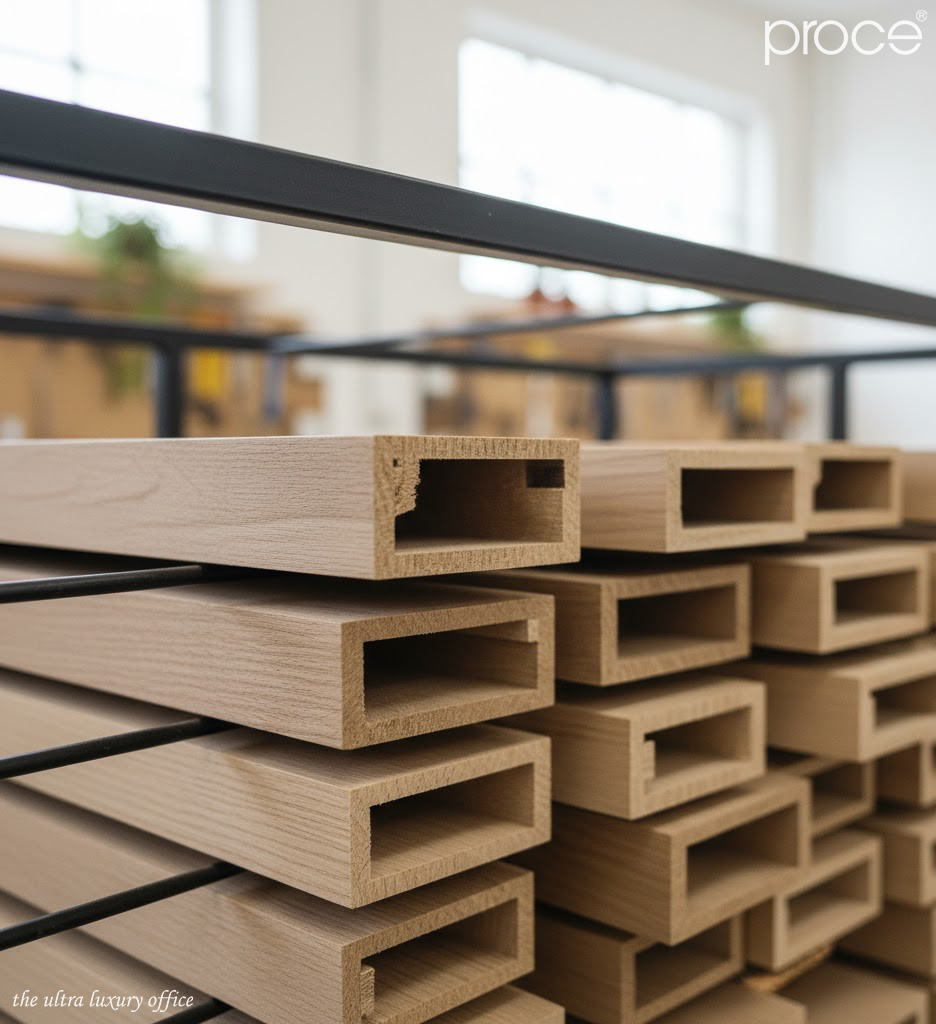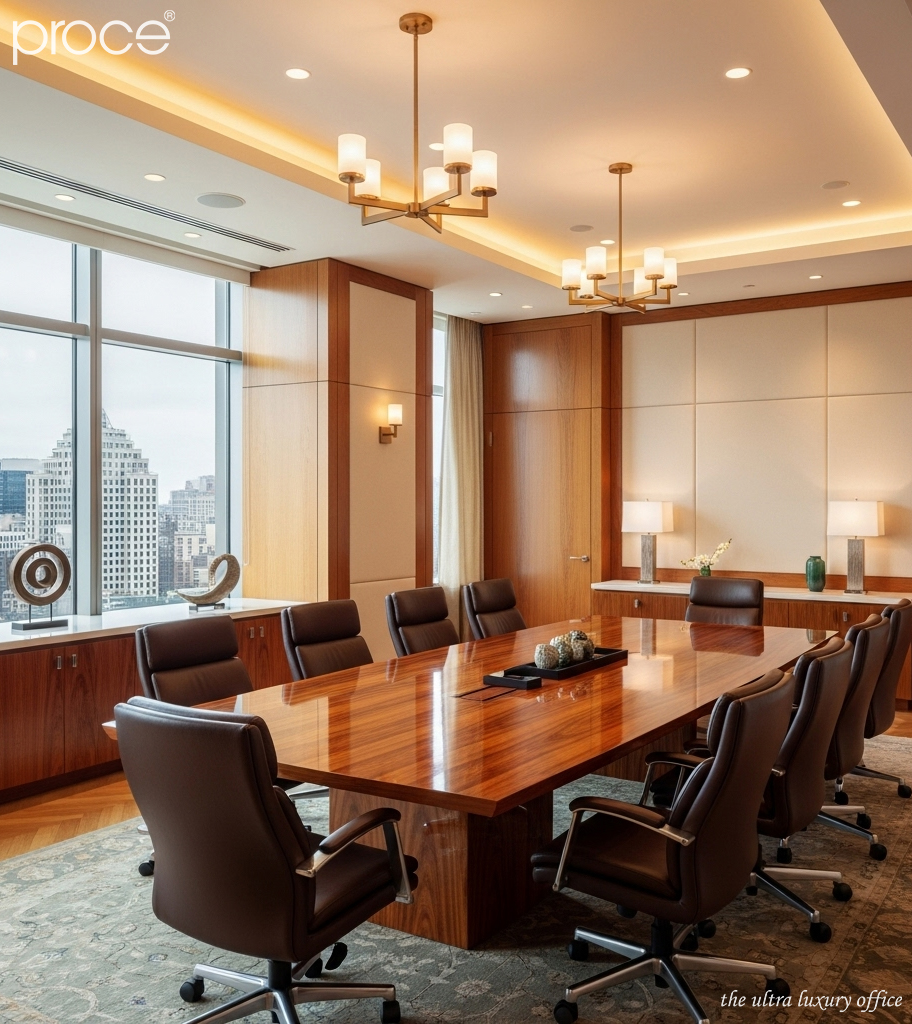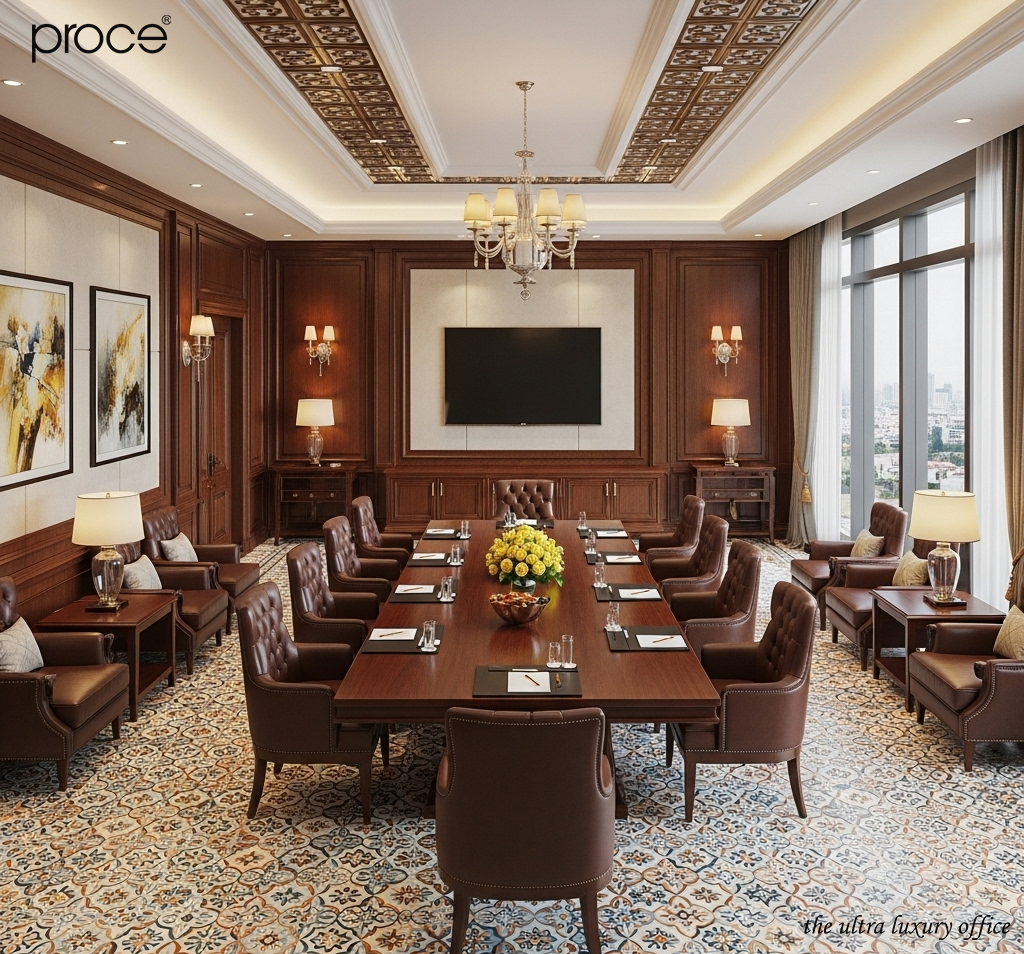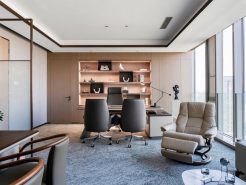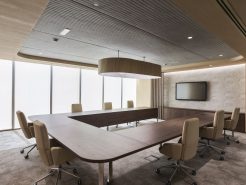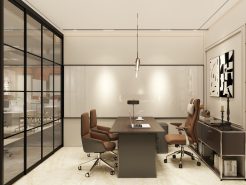Have you ever stood in the middle of a splendid meeting room, full of shiny wood paneling but still clearly heard the sound of knocking on the table from the next room? Sound – the invisible but “scheming” one, always finds a way to sneak through every gap. Even when you think that wood can block everything. But the truth is that not all wood is born to be a “hearing shield”. There are thick wooden panels like “loyal guards”. And there are also hollow types of wood that seem thick but are like “insiders” of noise. Why is that? This war of sound and materials is about to be exposed through the article below!
1. Physical and mechanical structure of solid wood and hollow wood
Solid wood – The foundation for lasting structures
Solid wood is a type of wood with a monolithic structure, seamless from the outside in. Without containing hollow cavities or air layers inside. These are usually natural woods that are directly exploited from the tree trunk. Then processed and processed without going through the steps of pressing layers or artificial shaping like industrial wood. The physical structure of solid wood is shown through the tight connection between the wood fibers. Creating a uniform, durable block over time.
In terms of mechanics, solid wood often has high density, good hardness and outstanding load-bearing capacity. Thanks to its large density, solid wood has the ability to absorb and eliminate mechanical vibrations effectively. Thereby helping to reduce vibrations and noise. Especially in applications such as floors, doors, tables and chairs or interior details that require sturdiness.
In addition, the solid wood surface also brings a warm, solid and luxurious feeling to the touch. With a solid structure, the lifespan of solid wood is often very high. And it is less deformed by environmental conditions such as temperature or humidity. These advantages make solid wood always popular in traditional architectural works and luxury interiors.
Hollow Wood – When Light Weight Becomes an Advantage
Hollow wood is a type of wood material designed to have a non-solid structure. Including empty chambers or a lightweight core inside to reduce the overall weight. This is a type of wood commonly found in industrial wood products. Such as honeycomb plywood, hollow core MDF or interior doors with an internal skeleton design.
In terms of structure, the outer part of the hollow wood is usually a veneer, MDF board or thin plywood. Covering a skeleton or core made of pressed paper, plastic or lightweight material panels. This structure helps save materials. While still maintaining the shape and aesthetics of the product.
In terms of mechanics, hollow wood has the advantage of being light weight, easy to construct and transport. At the same time, the price is cheaper than solid wood. However, because it contains air or light materials inside. The structure of hollow wood is not uniform, leading to poorer sound insulation, heat insulation and load-bearing capacity. In particular, the hollow cavities inside are also an ideal environment for sound to propagate. Therefore, this material is not suitable for applications that require good sound insulation such as meeting rooms. Places that require quietness and concentration for strategic discussions.
However, with the advantages of cost and convenience in construction, hollow wood is still a popular choice in modern constructions that require budget savings. (President’s office interior design – Why titanium-plated handles are durable)
2. Why is solid wood better at soundproofing than hollow wood in meeting room?
Weight Rule – The heavier the better the soundproofing
In an environment that requires quiet and high concentration such as a meeting room. Sound control is an extremely important factor. According to a physical principle called “Mass Law” – the mass rule. The larger and thicker the material, the higher its ability to block sound waves from passing through. The reason is because sound, in essence, is a mechanical vibration transmitted through air and objects. When sound waves encounter a heavy surface. It will lose energy because it is difficult to vibrate that material.
Solid wood, with high density and monolithic structure. Creates a solid barrier that prevents sound from spreading from outside into the meeting room and vice versa. Thanks to its large weight, solid wood significantly reduces the amplitude of sound waves. Thereby limiting sound from passing through partitions or doors. This helps the meeting room space to maintain privacy. Avoid being affected by outside noise. At the same time, it does not let information inside leak out. This is especially important for closed meetings or strategic conferences. (Unboxing 4 million dollar meeting rooms of Proce).
Monolithic structure – No escape for sound
One of the key factors that makes solid wood superior in sound insulation is its seamless and solid structure. Unlike materials with cavities inside, solid wood does not contain pores or air pockets. These are potential “escape routes” for sound to pass through. In a meeting room, where concentration and clarity of speech are required. This is even more important.
When sound waves hit a solid surface like solid wood, they don’t have a chance to penetrate the gaps or be randomly reflected inside the material. Instead, the sound energy is absorbed and attenuated right at the contact surface. As a result, it is difficult for outside sounds to penetrate the meeting space. At the same time, the voices inside are also kept intact, without being disturbed or escaping. This is the factor that helps solid wood maintain a stable, quiet and professional sound environment. Essential in corporate meeting rooms, where every conversation can be strategic.
Hollow Wood – Risk of Resonance and Noise in Meeting Room
Although hollow wood has the advantage of light weight and low cost. But in environments that require strict sound control such as conference rooms. The hollow structure becomes a major weakness. The empty spaces inside hollow wood often act as resonance chambers. Where sound waves can reflect, enhance and prolong their lifetime in space.
In fact, when sound enters these cavities, it is not immediately eliminated, but is reflected, creating echoes and noise. The air inside the cavities also facilitates the propagation of sound waves. Making it easy for outside sounds to enter and difficult for inside sounds to be controlled. This directly affects the quality of the meeting. Makes it easy for participants to lose focus, making it difficult to hear what is being said. And reduces the confidentiality of the content of the exchange.
Therefore, in spaces requiring high sound clarity such as conference rooms, the use of hollow wood is generally not recommended without accompanying acoustic treatment measures.
Solid wood – Eliminates vibrations, keeping the meeting room as quiet as possible
In addition to the ability to block sound transmission, solid wood also has another outstanding advantage in controlling sound in meeting rooms. That is, reducing mechanical vibrations. When sound waves, especially loud or low noises, hit surfaces. They not only travel through the air, but also create vibrations that propagate through the material. If the material is thin, light and not strong. These vibrations will continue to spread. Causing the phenomenon of reverberation or echo through the partition, floor or door.
Solid wood, with large mass and solid structure. It has the ability to absorb and eliminate these mechanical vibrations almost immediately. Thanks to that, the sound does not spread to the adjacent spaces. And does not cause noise interference for the people in the meeting room. This is an important factor in maintaining the quiet and professionalism of the meeting room space. Especially in office buildings with many adjacent functional rooms.
With its ability to dampen vibrations, solid wood does more than just act as a soundproof layer. It is also part of an overall acoustic control solution. Helps meetings run smoothly, without being interrupted by outside noise (The reason Proce uses an under-desk wiring system for meeting rooms).
Conclude
In acoustic design, especially for spaces that require quietness and concentration such as meeting rooms. Materials are not just the “outer shell”, but the “gatekeeper” of sound. Solid wood, thanks to its monolithic structure, high density and good vibration suppression ability. Has proven to be superior in soundproofing compared to hollow wood. Not only does it help prevent noise effectively. Solid wood also contributes to shaping a professional, classy and discreet space. Choosing the right material is both a technical decision and a statement of quality, experience and deep understanding of modern architectural design.
=====\
PROCE – TOTAL LUXURY OFFICE SOLUTION
Website: https://proce.vn/
Youtube: https://www.youtube.com/@noithatvanphonghangsang
Fanpage: https://www.facebook.com/vanphongnhapkhauProce
GG Business: https://business.google.com/dashboard/l/15115233216900975876
Linkedin: https://www.linkedin.com/company/74359718/admin/
Hotline: 090.115.6767
#phong_hop; #phong_hop_phong_chu_tich; #phong_hop_dang_cap
#phong_hop_chuan_sang; #noi_that_phong_hop; #thiet_ke_phong_hop
#phong_hop_chu_tich_cao_cap


